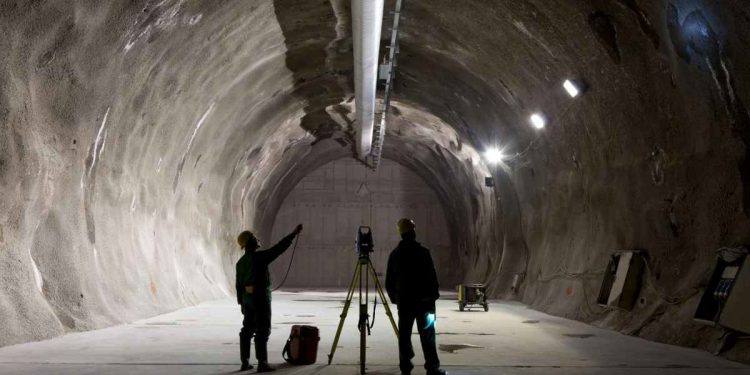Mining cryptocurrency can be a lucrative business. But it requires careful management of the hardware involved in the process. Here are some best practices for miner management that can help maximize profits and minimize downtime, shared by the experts at Foreman Miner Management Solutions.
Bitcoin mining has become big business over recent years. But that doesn’t mean that there aren’t challenges to the industry. In fact, with escalating energy prices and an increasingly competitive landscape, it’s more important than ever that miners understand how to run their operations efficiently and cost effectively. Some of the key considerations here are:
Hardware Selection
Choose the right hardware for the job. Different cryptocurrencies require different types of hardware, so do your research to ensure you’re using the most efficient hardware for the cryptocurrency you want to mine. Be sure to consider factors like energy consumption, hash rate, and cost when selecting hardware.
Maintenance
Keep your mining hardware clean and well-maintained. Regularly clean dust and debris from the fans and heat sinks to ensure that the equipment runs efficiently. Monitor the temperature of your miners and ensure that they are operating within safe temperature ranges.
Cooling
Proper cooling is crucial for miners. Overheating can cause damage to the hardware, reduce efficiency, and increase energy consumption. Consider installing additional cooling solutions like fans or liquid cooling systems to keep your miners running smoothly.
Power Supply
Choose a high-quality power supply with enough capacity to handle your mining operation. A reliable power supply can help prevent downtime and protect your equipment from damage. In some cases, it might be profitable to set up your mining operation in a location where renewable energy sources are abundant.
Cost Optimization
Maximize profits by minimizing costs. Consider factors like electricity rates, hardware efficiency, and pool fees when optimizing your mining operation. Research the most cost-effective mining pools and consider joining a pool with other miners to reduce fees.
What is a mining pool?
Mining alone can be difficult, so it’s recommended to join a mining pool. A mining pool is a group of miners who work together to solve blocks and share the rewards. By joining a mining pool, you can increase your chances of finding a block and earn more rewards.
Monitoring
Keep a close eye on your mining operation. Use monitoring software to track performance and identify any issues that may arise. This can help prevent downtime and ensure that your miners are running efficiently.
Keep Innovating
Bitcoin mining is a constantly evolving industry, so it’s important to stay up-to-date with the latest developments. This includes staying informed about changes in the bitcoin network, mining difficulty, and technology improvements.
Be Patient
Bitcoin mining can be a slow and steady process, and it may take some time to see significant returns. It’s important to be patient and persistent, as success in mining requires long-term planning and commitment.
A Backup Plan
Always have a backup plan in case of equipment failure or other issues. Keep spare hardware on hand and consider investing in a backup power supply or generator to ensure that your mining operation can continue even in the event of a power outage.
Bitcoin mining can be a profitable venture, but it requires a significant investment of time, money, and resources. By following these best practices, you can help ensure that your mining operation runs smoothly and efficiently, maximizing profits while minimizing downtime and maintenance costs.
Curious as to how it all began? Here’s a brief history of Bitcoin.
Bitcoin is a decentralized digital currency that was created in 2009 by an unknown individual or group using the pseudonym Satoshi Nakamoto. Bitcoin was the first cryptocurrency to use a decentralized blockchain network, which allows for secure peer-to-peer transactions without the need for a central authority or intermediary.
The origins of Bitcoin can be traced back to a paper published by Satoshi Nakamoto in 2008, titled “Bitcoin: A Peer-to-Peer Electronic Cash System.” The paper outlined the principles behind Bitcoin and described how it would work as a decentralized digital currency.
Bitcoin’s early days were marked by its use as a tool for illicit activities on the dark web. However, as its potential as a secure and decentralized currency became apparent, more and more people began to take notice.
In 2010, the first real-world transaction involving Bitcoin occurred when a programmer in Florida named Laszlo Hanyecz traded 10,000 bitcoins for two pizzas. This event is now celebrated as Bitcoin Pizza Day.
As Bitcoin gained more mainstream attention, its value began to rise rapidly. In 2013, its value reached over $1,000 for the first time, but then crashed to around $500. In 2017, Bitcoin experienced another massive surge in value, reaching an all-time high of nearly $20,000 in December of that year.
Despite its volatility, Bitcoin has continued to gain acceptance as a legitimate currency and investment vehicle. Many businesses now accept Bitcoin as payment, and major financial institutions have begun to invest in Bitcoin and other cryptocurrencies.
Today, Bitcoin is still the most popular and valuable cryptocurrency, with a market capitalization of over $900 billion as of early 2023. Its success has also inspired the creation of numerous other cryptocurrencies, which collectively make up the rapidly growing cryptocurrency market.
Where next for Bitcoin? No one knows for sure, of course, but one thing is for sure: the arrival of Bitcoin has changed the financial landscape forever and the world will never be quite the same again.














